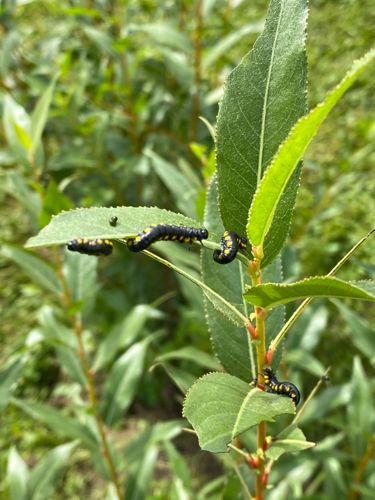Willow Sawfly or Dusky Willow Sawfly
Scientific Name: Nematus salicis (Linnaeus, 1758) or Nematus oligospilus (Förster, 1854) - The identification of specific Nematus species can be complex, but these characteristics generally point to a willow-feeding sawfly.
Order & Family: Order: Hymenoptera, Family: Tenthredinidae
Size: Larvae typically grow to about 15-25 mm (0.6-1 inch) in length when mature. Adult sawflies are usually 8-12 mm (0.3-0.5 inches) long.

Natural Habitat
Found in areas where willow and poplar trees grow, such as riparian zones, wetlands, moist woodlands, and cultivated landscapes that include these host plants. They are common in temperate regions across North America, Europe, and Asia.
Diet & Feeding
The larvae are herbivorous and primarily feed on the leaves of willow (Salix spp.) and sometimes poplar (Populus spp.) trees and shrubs. They consume the leaf tissue, often leaving behind only the veins, which is characteristic damage.
Behavior Patterns
The larvae, often called 'sawfly slugs,' typically feed in groups during their early instars. When disturbed, they may rear their heads and tails in a 'U' shape in a defensive posture. Mature larvae drop to the ground and pupate in the soil or leaf litter.
Risks & Benefits
Potential risks include defoliation of host trees, especially during outbreaks, which can weaken or stress the trees, making them more susceptible to other pests or diseases. For ornamental trees or nursery stock, significant defoliation can reduce aesthetic value or marketability. There are no direct risks to humans. As a benefit, they are part of the natural food chain, serving as food for birds and other predators, contributing to ecosystem biodiversity.
Identified on: 9/3/2025